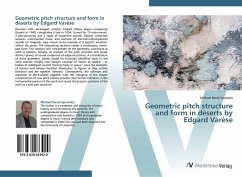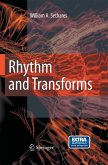Revision with unchanged content. Edgard Varèse began composing Déserts in 1949, completing it late in 1954. Scored for 15 instruments, 5 percussionists and 2 tapes of organized sounds, Déserts comprises acoustic instrumental music and sections of electronicallyorganized sounds on magnetic tape meant to be inserted at 3 specific locations within the piece. The alternating sections create a continuous, seven-part form. This analysis will concentrate on the geometric constructs at work in Déserts. Initially, an analysis of the pitch structure will reveal distinct planes of sound comprised of adjacent pitches. A consideration of these geometric planes based on trichords identified early in the work provide insight into Varèse's concept of "music as spatial - as bodies of intelligent sounds moving freely in space," since the elements of tension and release manifest themselves in figures as they collide (tension) and are repelled (release). Consequently, the collision and repulsion of pitch-planes together with the changing of the shapes (construction of new pitch planes) provide clear formal indicators in the instrumental portion of the work and reveal the acoustic portions of the work as a two-part structure.
Bitte wählen Sie Ihr Anliegen aus.
Rechnungen
Retourenschein anfordern
Bestellstatus
Storno








